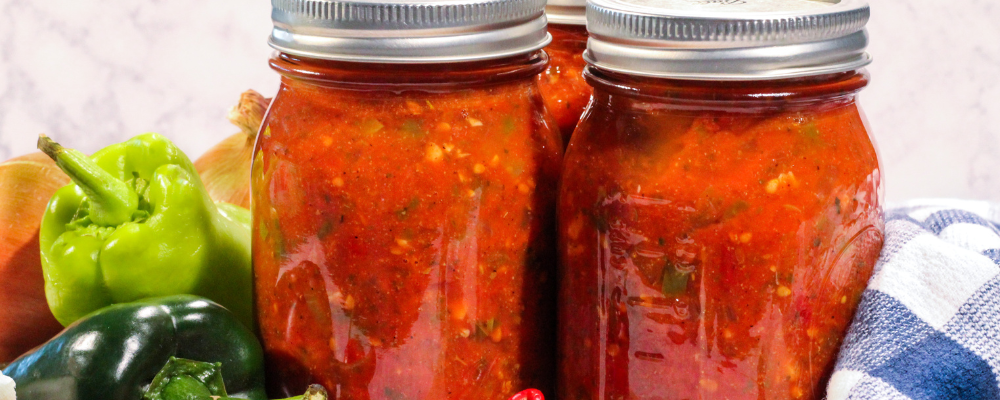
The Missing Ingredient: Adherence of Food Blog Salsa Recipes to Home Canning Guidelines
— By Kathy Savoie, Extension Professor, University of Maine Cooperative Extension
Increased interest in home food preservation, the popularity of home canning salsa, and the emergence of food blogs as easily accessible sources for recipes have created concerns about the safety of home canning recipes on food blogs. How safe are the salsa recipes found on popular food blogs? According to a research study by the University of Maine Cooperative Extension, there are a lot of issues to be concerned with related to salsa recipes on food blogs,—mostly what isn’t there.
Traditionally, salsas are mixtures of low-acid foods, such as onions and peppers, and acidic foods, such as tomatoes. Depending on ingredient ratios, the resulting acidity of salsa mixtures may not be high enough to safely process in a boiling water bath, which is still the most common method for canning in American homes. Historically, home-canned vegetables have been the most common cause of botulism outbreaks in the United States. Two recent botulism outbreaks in 2015 and 2018 involving improperly home canned foods demonstrate that this risk continues, as well as the need for continued education for those who want to preserve foods at home.
About the Research Study
The research study, “Adherence of Food Blog Salsa Recipes to Home Canning Guidelines,” by UMaine Extension Professor Kathy Savoie and Jen Perry, UMaine Assistant Professor, found that the majority of USDA home canning guidelines were not included in food blog recipes, an average 70% across all four categories analyzed, representing an overwhelming lack of adherence and cause for food safety concerns.
The researchers created a tool based on the USDA Complete Guide to Home Canning for Acidified Foods to examine 56 blog posts on home canning of salsa from 43 food blogs. Adherence to guidance in the following four categories was measured: acidification, thermal processing, contaminants, and vacuum sealing. Alarmingly, analysis of acidification volume to tomato volume revealed that 12 (21%) of the 56 recipes failed to even meet the minimum USDA acidification guidelines for tomato volume alone. Of the blogs evaluated for this study, the number of Facebook followers ranged from 719 to 3,256,656 with an average of 145,953. Additional areas of concern include:
- Only five recipes (9%) actually contained sufficient quantities of acid to account for the volume of vegetables used.
- Very few (14%) provided information regarding necessary adjustments for altitude.
- Although more than half of recipes (34, or nearly 61%) correctly specified the length of time to process jars in a boiling water bath, only ten (29%) of these indicated that processing time should start after a rolling boil is achieved, representing a critical risk of under-processing.
- Only four (7%) of the 56 recipes reviewed provided correct information on all of the following three measures: total processing time, when to start processing time, and altitude adjustment.
- Only eight (14%) specified the correct type and strength of acid(s) to ensure safety.
- The average acidification ratio across all recipes in this study was 0.94 tablespoons per cup of peppers and onions, less than half the recommended level to ensure safety during extended anaerobic storage.
How to Can Safely at Home
So what can a home canner do to ensure that they are making salsa safely at home?
Access recipes and resources from the USDA, UMaine Extension, and the National Center for Home Food Preservation to know the latest techniques and guidelines to safely preserve foods at home.
- Make sure that you are using recipes that have been tested to ensure that the salsa is properly acidified to ensure safety.
- When searching the web, search for accurate, science-based information by typing site:.edu at the end of your query term. This will help to direct your search towards educational institutions. You can use the same strategy and to search for government information, ending your query with site:.gov. For example search, “canning salsa site:.edu”
- Follow along with our *new* time-lapse salsa video to ensure that you are using the correct techniques for home canning.
Resources
- Food Preservation Publications
- Upcoming Food Preservation Workshops & Webinars
- How to Make Salsa Recipe Video
- Salsa Recipes (National Center for Home Food Preservation)
